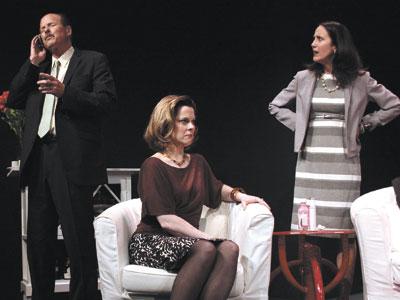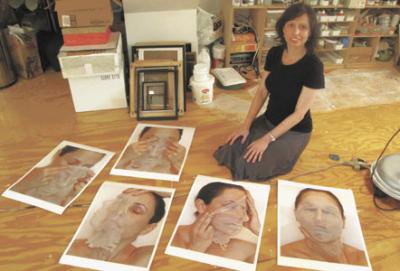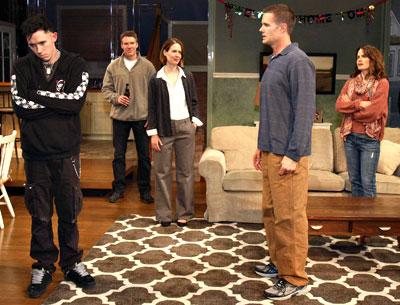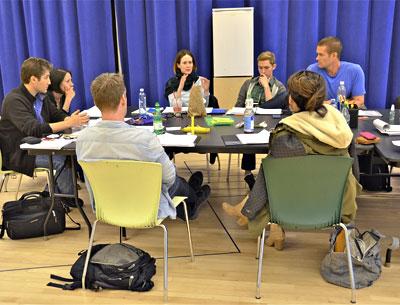Civility Sacrificed
Civility Sacrificed

“God of Carnage‚” by Yasmina Reza, opened at the Hampton Theatre Company in Quogue last week, the end of a standout season of productions that managed to be both funny and provocative at the same time.
The play, performed without an intermission, follows the afternoon get-together of two sets of parents who meet to discuss what to do after their 11-year-old sons have engaged in a playground battle. The couples, Alan and Annette Raleigh (Andrew Botsford and Rosemary Cline) and Michael and Veronica Novak (Joe Pallister and Jessica Ellwood), talk about “the soothing powers of culture‚” and “the art of co-existence,” sip espresso, and admire expensive flowers, while just underneath the veneer, all hell is about to break loose, Albee-style.
The meeting begins with awkward formality as the group samples Veronica’s clafouti and Alan answers a stream of business calls on his cell, and slowly degenerates into a name-calling, foot-stomping free-for-all. Whether it’s a casual confession by Michael about what he did with their daughter’s hamster, or Annette’s sudden onset of nausea (emetophobes beware), their real nature rises to the surface.
At some point, alliances form and are broken — one couple against the other, or the men against the women, or any other possible combination. Add in the expensive rum, and eventually all of the niceties are stripped away and dog-eat-dog triumphs over civility. The god of carnage is, as always, pleased by the sacrifice.
This is all done in fun, of course, and the audience gets a good dose of low-class humor as the high-class parents become children themselves. “God of Carnage‚” won the Tony Award for Best Play in 2009, and prior to that, the Olivier Award for Best New Comedy (which was also won by “Heroes,” another French-to-English translation served up earlier in the Quogue season). Roman Polanski adapted Reza’s play into the 2011 film “Carnage.”
The performances are all spot-on. Mr. Botsford plays Michael — who is really in two places at once as he tries to put out pharmaceutical fires on his cell while appearing interested in the parental conference — with a dash of well-placed confusion and a heaping helpful of arrogance, a winning comedy combination. Joe Pallister’s Michael is a real man forced to wear a monkey suit by his controlling wife, Veronica, played with panache by Jessica Ellwood, who tries to keep everything functioning smoothly. Rosemary Cline gets to make one of the largest leaps, from composed, cultured wealth management director to a frightened, sickly, spoiled child. All in all, the cast works together and works well.
Diana Marbury, who directs with aplomb, has also delivered a set that features a stylish neutral living room with a background of angry red, a portent of what the evening will bring.
“God of Carnage” lets the audience enjoy watching an urbanite, bourgeois train crash up close and personal, but with plenty of laughs emerging from the wreckage.
The play will remain in production through June 8, with performances Thursdays through Sundays. Tickets and showtimes are available at hamptontheatre.org.



